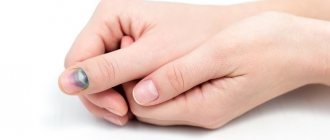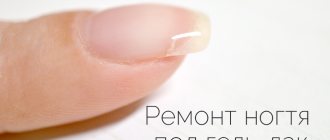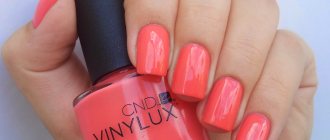Not always, when performing this or that work, we sufficiently protect ourselves.
The precautions that must be taken seem unnecessary or unnatural to us. Hardly anyone wears gloves when preparing food on a cutting board.
But it is in everyday life that we most often have the opportunity to get a splinter , sometimes without even noticing it right away.
A splinter is a painful phenomenon , especially unpleasant when it ends up under the nail, in a place where it is especially difficult to get it out.
Sometimes we do not detect a splinter immediately, but only when suppuration has already begun, since a foreign body caught under the nail most often carries an infection. It is impossible to ignore a splinter: it causes pain and can lead to serious consequences (swelling at the site of contact, suppuration, panaritium, infections, fever).
Splinters must be removed, not forgetting to thoroughly disinfect the affected area.
What types of splinters are there?
There is an opinion that skids can only be caused by wooden objects with a poorly treated surface. This is far from true. Although splinters from wooden objects are the most common, you need to be careful when working with glass, metal shavings, and plants with thorns (especially cacti).
Splinters from wooden objects
When working with gardening tools, it is necessary to protect your hands with gloves, since the cuttings of the tools are not always sufficiently well processed and covered with a protective layer.
By making sudden movements, you can bring a piece of wood under the skin or under the nail. The danger of such a splinter is that dirt gets in along with the foreign body , which without proper attention will certainly lead to decay.
| Splinters from wooden objects are dangerous because they can break when removed. Then the remaining part, sometimes not immediately noticeable, will manifest itself over time as serious complications. |
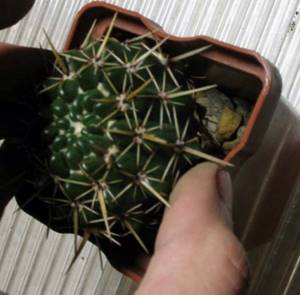
cactus splinter
Splinters from plants
Not all plants are harmless.
Even when caring for house plants, you should not forget about safety rules.
The spines or thorns may become embedded in the skin or under the nail. Remember that some plants, defending themselves in nature, not only developed “weapons”, but also supplied them with poison.
Cost of services
The prices indicated in the price list may differ from the actual prices. Please check the current cost by calling +7 495 104 8605 (24 hours a day) or at the GMS Hospital clinic at the address: Moscow, st. Kalanchevskaya, 45.
| Name | Price |
| Removal of a foreign body from the ear, nose, throat | RUB 8,075 |
| Removal of a foreign body with tissue dissection | RUB 11,680 |
| Consultation with surgeon Alexander Givievich Natroshvili | RUB 4,999 |
Dear Clients! Each case is individual and the final cost of your treatment can only be found out after an in-person visit to a GMS Hospital doctor. Prices for the most popular services are indicated with a 30% discount, which is valid when paying in cash or by credit card. You can be served under a VHI policy, pay separately for each visit, sign an agreement for an annual medical program, or make a deposit and receive services at a discount. On weekends and holidays, the clinic reserves the right to charge additional payments according to the current price list. Services are provided on the basis of a concluded contract.
Plastic cards MasterCard, VISA, Maestro, MIR are accepted for payment. Contactless payment with Apple Pay, Google Pay and Android Pay cards is also available.
Western standards of treatment (evidence-based medicine)
Continuous staff development
Regular interaction with leading Russian and foreign medical institutions
Modern medical equipment and advanced diagnostic and treatment methods
Unified standard of service
We work around the clock 24/7/365
Make an appointment We will be happy to answer any questions Coordinator Oksana
Should you see a doctor if you have a splinter?

In most cases, visiting a doctor to remove a splinter from soft tissue is not required: with sufficient processing of the instruments and shallow penetration, it can be removed at home.
| The situation is different if the splinter gets under the nail. It is not easy to get to because the hard nail plate is difficult to move apart to make room for tools. |
It’s good if the edge of the splinter remains visible and does not disappear under the nail . In this case, you can grab the foreign body with tweezers and try to remove it. A splinter under the nail is very painful because the nail plate covers the nerve endings.
You should seek medical help in the following cases:
- It is not possible to remove the splinter on your own because it is deep; surgery is required , sometimes even removing part of the nail plate.
- After trying to remove the splinter on my own, part of it remained under the nail.
- It is imperative to consult a doctor if there is pulsation or visible suppuration and swelling in the affected area.
- If the splinter is from a plant whose poisonous properties you know or even suspect.
- Even if you removed the splinter yourself, but at the site of the lesion you observe a change in the color of the nail plate, deformation of the surface or other visible changes, consult a doctor immediately.
- A splinter under the nail is not only painful, but, without proper attention, can cause more serious illnesses , so seeing a doctor will help avoid unpleasant consequences.
Disinfection rules

We have already talked about the importance of proper antiseptic treatment of the skin and all tools that are used to remove the splinter. But even after getting rid of the unpleasant foreign body, it is important not to forget to re-lubricate the skin with a suitable antiseptic. Its role may be:
- Absolutely painless Chlorhexidine. In order for the medicine to reach all corners well, you need to blot a cotton pad with it and apply it to the sore spot as a lotion. In the same way, you can use the slightly more expensive, but very effective Miramistin.
- Alcohol solution of calendula, propolis or iodine.
If attempts to remove the splinter fail, lubricate the wound with an antiseptic and consult a doctor. Most likely, a doctor will help you get rid of the foreign body, using anesthesia.
Splinter processing, splinter removal tools processing
| If the splinter has entered shallowly under the nail and part of it is accessible, then you can try to remove it yourself. |
!An important condition is the treatment of the affected area and the tools that you will use to remove the splinter.
- Before removing a splinter, be sure to wash your hands thoroughly , this is especially important if the splinter was received during gardening work or repairs, when conditions are far from sanitary.
- Treat the affected area . To do this, apply formic alcohol or a solution of boric acid (2 percent), hydrogen peroxide is also suitable. If you don’t have anything pharmaceutical with you, you can use vodka or cologne.
- Carefully treat the tools you intend to use to remove the splinter. The same products that you used to treat the wound are suitable for treatment. It is better to wipe the tools with moistened cotton pads.
- After successfully removing the splinter, it is recommended to re-treat the affected area , since the foreign object that got under the nail brought with it germs. Under the nail, where air supply is limited, they will develop quite quickly. The infection may not appear immediately and can lead to serious consequences. You can treat the area with brilliant green or iodine.
How to properly disinfect a wound

After successfully removing the splinter, it is necessary to treat the inflamed area with a manganese solution, then anoint it with brilliant green or iodine solution. Vodka, cologne or alcohol will also work. Despite the preventive procedures performed, sometimes the extraction site may become inflamed.
Synthomycin liniment ointment can be applied to the inflamed area. When there is no infection in the wound, it can heal quickly. At the first signs of purulent inflammation, you should urgently see a doctor.
Mechanical splinter extraction technology

To remove a splinter from under your nail yourself, try the following:
- Carefully clean all necessary tools (needle, tweezers), wash your hands and treat the surface of the nail plate.
- If the splinter is small, prepare a magnifying glass.
- If the splinter is visible, the edge of the foreign body is sticking out, pick it up with tweezers and pull it at the same angle at which the splinter entered under the nail. Try not to pull with sudden movements , as you may break the splinter: in this case, it will be much more difficult to remove it.
- If the site of penetration of the splinter is difficult to see, you can smear the nail with a weak solution of potassium permanganate. A dark dot or stripe will appear at the site of penetration.
- If possible, before removing the stain from under the nail steam your finger by dipping it in warm water and soda. A slight softening of the nail will help “spread” the nail plate, which will allow the splinter to more easily come out from under the nail.
- After removing the splinter, treat the affected area. If you are in conditions that are far from sanitary, it is better to put a bandage on your finger.
How to remove a splinter using a needle
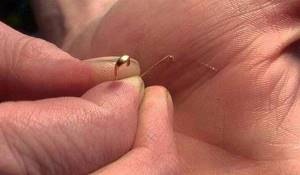
- We insert the needle carefully into the foreign body at a right angle. We pull it out only when the tip of the needle is firmly fixed.
- If you are unable to remove the object, you can carefully enlarge the resulting wound with a needle. Now try to pull out the splinter by the tip with tweezers.
- When the body of the foreign inclusion has become parallel to the skin, you should use a needle to pick up the skin and destroy it. Now the foreign inclusion can be pulled out freely.
Folk remedies for removing splinters

To remove a splinter from under a nail, you can make compresses: 1. Add a teaspoon of vodka to a tablespoon of finely grated cabbage . Place the resulting mass in a sterile bandage and apply it to the splinter. After 2-3 hours, the splinter should pull out from under the nail. If the splinter is deep, the procedure must be repeated several times. 2. A compress of onions will help pull out the splinter , which must be grated until mushy on a fine grater. 3. An aloe leaf will help pull out the splinter. It is necessary to cut off part of the leaf, revealing its pulp. Apply the pulp to the affected area and bandage. Keep the compress for 2-3 hours . Repeat as necessary. 4. To pull out a splinter, you can apply a compress of grated potatoes.
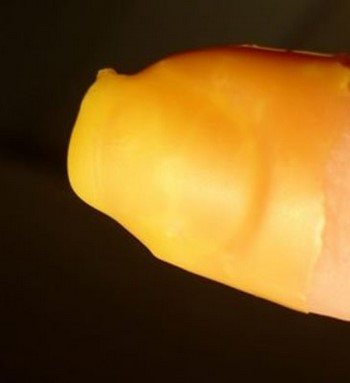
wax will help remove the splinter
Complex cases
The splinter sits very deep
If the above steps are unsuccessful or the splinter is so small that it cannot be seen because it has sunk deep into the skin, then use one of the following methods:

Splinter deep under the nail
- Pharmacy ichthyol ointment can help remove a splinter if you wrap your finger in it for a couple of hours.
- Vishnevsky ointment will effectively help to “pull out” a stuck splinter. In addition, it disinfects and eliminates the purulent process that has begun. Make a compress with Vishnevsky ointment at night.
- Warm vegetable oil will help the splinter “emerge” from the finger. To do this, keep your finger in the heated oil for about 10 minutes.
Several more ways to remove a deep splinter are presented in this video:
Splinter in a child

If your baby is afraid of needles or other tools, you can try to distract his attention and quickly, confidently remove the splinter.
Or, after steaming, carefully wipe the baby’s finger from moisture and resort to using a patch . Glue it to the splinter, then remove it carefully. The edge of the splinter will stick to the patch and will be removed.
Cleansing film masks or depilatory wax, applied to the problem area and then removed after hardening, can help quickly and without a needle.
How to remove a splinter as painlessly as possible
The only way to remove a splinter without any pain is to use skin painkillers . Among them is Liracaine , which is gel-based and will easily penetrate under the nail.
Gel Sustain , which is designed to relieve pain when applying a tattoo, can also help in removing a splinter. Another powerful remedy is SuperTrio - a special remedy for pain relief from unpleasant cosmetic procedures. There are many other products that are available in the pharmacy chain.
Wax and resin for removing splinters from under the nail
If the tip of the splinter is slightly visible, but it is impossible to pry it off, it is recommended to use resin or wax .
- Apply heated wax or resin to the nail and leave until completely hardened.
- Afterwards, carefully remove the wax or resin in the direction of the splinter’s entrance.
- The splinter should attach to the wax or resin and come out when it is removed.
- You can soak your finger in a bath of soap or soda before applying wax or resin: this will soften the nail.
Benefits of visiting GMS Hospital
Removal of foreign objects from soft tissues at the GMS Hospital surgical center does not take much time and is performed on an outpatient basis, using local anesthesia and modern surgical equipment. By contacting us, each patient receives:
- fast, qualified surgical care without queues or delays;
- treatment of wounds and injuries of various types;
- non-hazardous and painless removal of a foreign object of any nature;
- in the presence of a serious traumatic injury, hospitalization is possible;
- the surgery center is equipped with the necessary equipment for rapid diagnosis and surgical treatment of foreign bodies in soft tissues;
- The operation is performed within an hour after treatment on an outpatient basis.
The center’s specialists have extensive experience in performing such interventions and quickly remove an object of any nature, using modern equipment and safe anesthesia. To make an appointment, please call the reception desk or leave a request on the website.
Complications after removing a splinter from under the nail
A splinter caught under a nail is dangerous due to its complications.
It is not always possible to remove it completely the first time. Even a small fragment left under the nail can lead to decay.
After removing the splinter, it is important to carefully treat the affected area and monitor the condition for several days . If you feel throbbing or pain, be sure to consult a doctor , as these are the first symptoms of possible complications. Penetrating under the nail, the splinter brings with it an infection that quickly spreads. If you notice swelling or redness, contact your doctor. Sometimes delay leads to the need for surgical intervention, including removal of the nail plate.
More about the procedure
Domestic or industrial injuries often lead to penetration of various bodies into soft tissues (skin, subcutaneous tissue, muscles) - glass and wood fragments, needle fragments and metal particles, plant thorns, etc. Small objects, for example, a wooden splinter located in the superficial layers of the skin, can often be removed independently. However, in order to avoid even greater tissue injury and the development of inflammation and suppuration, such manipulations are best carried out in a medical institution. Removal of foreign objects from soft tissues at the GMS surgery center is performed quickly, painlessly and with minimal trauma.
Features of a splinter in the foot
The skin on the feet is designed to become rough, so a splinter in the heel is an unusual condition for the body
The skin on the feet of most people is quite dense, and is anatomically designed to be rough, preventing splinters at all.
Since we practically don’t walk barefoot on the ground, and we brutally fight attempts at hormonal keratinization of the skin, our body is faced with a situation that, in principle, should not exist.
When walking, the entire weight of an upright primate falls on the foot, and not all at once - on the heel or on the toe. As a result, the splinter penetrates deeply, the thick skin fixes the foreign body, and the base breaks off under pressure almost immediately.
Standard methods for removing splinters do not work here; special skill and preparation are required.
Features of the rehabilitation period
In order for healing to proceed quickly and without problems, after the intervention you must follow medical recommendations:
- regularly treat the surgical wound and change dressings;
- minimize the load on the injured area;
- exclude thermal procedures (hot bath, saunas, steam baths);
- Do not visit the pool or bodies of water.
To make an appointment with GMS Hospital specialists and remove a foreign object, please call or fill out the feedback form on the website.
How is the operation performed?
In most cases, surgery is performed under local anesthesia and takes a few minutes. General anesthesia is used only for large operations. The doctor uses a scalpel to expand the wound canal to the required depth, grasp and remove the foreign object. After this, the wound cavity is treated with an antiseptic, sutures are applied, drained (if necessary) and everything is covered with a sterile bandage. In almost all cases, the patient is administered antitetanus serum and prescribed a short course of antibiotic therapy to avoid the development of complications.
You have questions? We will be happy to answer any questions Coordinator Tatyana
We reduce the risk of complications and suppuration
Grated potatoes
There is always a risk that splinter particles remain in the wound. Once most of the splinter is removed, the pain subsides, but the infection may remain. To prevent complications, there are the following methods:
- a bandage made from grated potatoes, which must be changed every 2 hours for 8 hours after removing the splinter. Potatoes have powerful anti-inflammatory, antimicrobial and immunostimulating effects.
- gauze compress with grated cabbage. Mix 2 parts of crushed (grated) cabbage with 1 part of medical alcohol. The tampon must be tightly fixed to the wound. Change every 3 hours.
- compress with apple. The fruit is crushed, mixed with vodka 2/1, and then applied to the wound. Change every 2 hours.
- Tar and Vishnevsky ointment
tar or Vishnevsky ointment. Excellent for removing pus and splinter remnants. Apply thickly to the wound and bandage it. The effect is observed after four hours - the wound is cleansed.
Tar and its derivative, Vishnevsky's ointment, are still used by surgeons as a means to extract pus from a wound. The product is proven, affordable and easy to use.
After removing the foreign body, the wound is treated with alcohol and a compress with calendula ointment is applied.
Helpful Home Methods
If the splinter was introduced recently and there are no signs of suppuration, you can remove it using home remedies that can always be found in the kitchen or in your medicine cabinet.
Removal with iodine solution
In folk medicine, there is a method for removing a foreign body using iodine. It can be used if the splinters are small and located close to the surface of the skin. This method is only suitable for removing sawdust, wood chips and plant thorns. The skin and nail plate at the site of injury are repeatedly lubricated with iodine. This is supposed to cause the wood chip to “burn.”
PVA glue
You can painlessly remove small wood or glass particles using white PVA glue (but not Moment!). This method is convenient if slivers or shards of glass are located shallowly under the nail, and their tips protrude above the surface. In this case, proceed as follows:
- Steam the damaged area in hot water for 15 minutes.
- Remove your finger from the water and blot it with a dry cloth or towel. Under no circumstances should you rub the affected area too hard.
- The area where there are splinters is generously watered with PVA glue and allowed to dry.
- When the glue dries and forms a film, it is removed along with foreign particles.
Instead of PVA glue, you can use nail polish, adhesive tape or tape. In this case, the affected surface must be completely dry so that the adhesive tape adheres well.

Using white glue you can remove small surface splinters
The author of the article had to use a plaster to remove a thorn that had gotten under the nail of a 3-year-old child. The baby was afraid and did not allow him to be touched with tweezers. Gradually, he was distracted with cartoons and a bandage was applied to his finger. The tip of the thorn stuck out, so it stuck to the patch, and the splinter was pulled out relatively easily. After removal, the finger was treated with hydrogen peroxide and sealed with a bactericidal bandage.
Banana peel
Banana peels can be used to get rid of foreign particles. To do this proceed as follows:
- The banana skin is thoroughly washed and a piece of suitable size is cut out.
- Apply to the skin with the inner side and secure with a bandage or plaster.
- Leave the compress on all night.
- In the morning, remove the bandage and remove the protruding particle with tweezers.
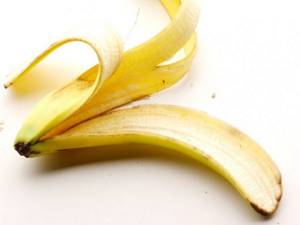
Using a banana peel can remove a foreign body from under your nails
Onions and other products
This homemade recipe is quite effective. To remove a foreign body from under the nail, proceed as follows:
- Peel a medium onion and prepare a paste - you can grate it, chop it using a blender or meat grinder.
- The resulting mass is applied to the sore spot and covered with a napkin on top.
- The compress is secured on top with a bandage.
- The bandage is left for 2 hours, after which it is removed and the splinter is removed.
In addition to onion pulp, compresses can be made from other products in a similar way. These include:
- grated raw potatoes;
- homemade cottage cheese;
- crumb of white bread;
- fresh lard;
- aloe leaf cut in half.
Cosmetic clay
To remove an old or festering splinter, you can use cosmetic clay. You can buy it in pharmacies. The step-by-step instructions are as follows:
- A tablespoon of clay is poured into a small ceramic or glass container.
- Add water in small portions, gradually stirring the clay. The result should be a mass with the thickness of sour cream.
- Add half a tablespoon of vinegar to the resulting mixture.
- Apply clay paste to the sore spot.
- When the clay is completely dry, it is washed off and a fresh portion is applied again.
The procedure is repeated until the tip of the splinter protrudes above the skin.

Cosmetic clay is an effective tool for removing foreign bodies
Vegetable oil
Traditional medicine recommends using sunflower or any other vegetable oil when other home methods are ineffective.
- The product is heated in a water bath. The temperature should be no more than 50 degrees to avoid burns.
- A cotton swab or gauze swab soaked in oil is applied to the affected area for 15 minutes, after which the splinter is easily removed using tweezers.

Vegetable oil helps remove a splinter when other remedies are ineffective
Baking soda
This method is good for getting rid of small superficial splinters. Make a paste from baking soda by mixing it with water. The resulting mass is applied to the sore spot for 2–3 hours. Under the influence of soda, the surface layers of the epithelium swell and become loose, which facilitates the procedure.

